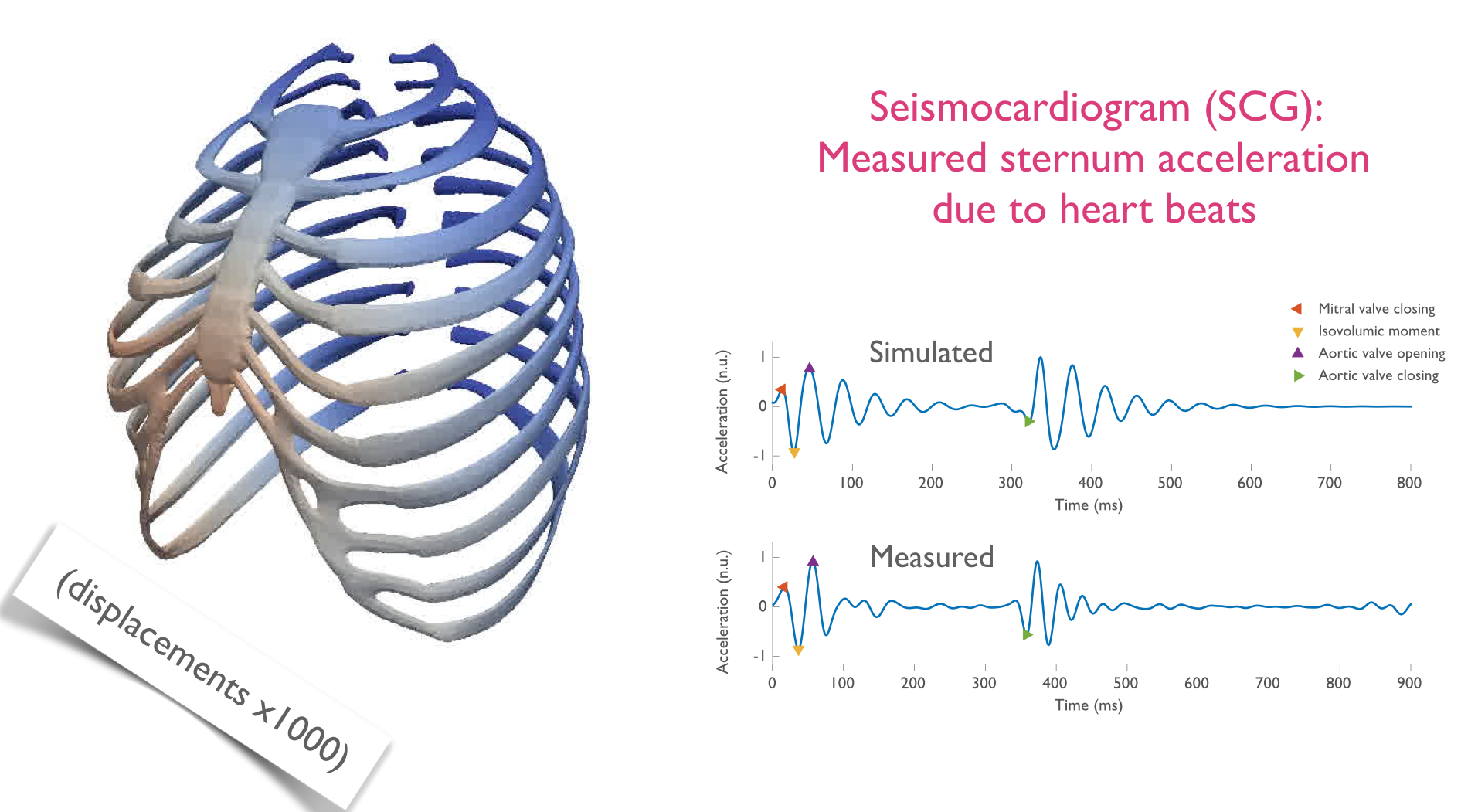Section: New Results
Modeling
Model-based analysis of continually measured signals of aortic pressure and flow
Participants : Radomir Chabiniok, Dominique Chapelle [correspondant] , Arthur Le Gall, Philippe Moireau, Fabrice Vallée.
We have started an application of reduced-order cardiac modeling in identifying relevant functional properties and state of heart from clinical records obtained during long-term (minutes-hours) monitoring of patients. Those are obtained either from anesthetized or intensive care patients by Fabrice Vallée, medical doctor in the department of anesthesia and intensive care at Lariboisière Hospital, Paris, who has joined the M3DISIM team in November 2015. The collaboration was initiated already in February 2015, and together with Fabrice we supervised the master's internship of Arthur Le Gall (medical doctor in his last year of specialization residency training). The internship took place at Lariboisière Hospital and in our lab at Inria Saclay (50:50%, period of April-September 2015). First published results are expected in 2016, when also a master's internship of a second student of Fabrice Vallée is scheduled. In addition, we intend to start a PhD on this topic in late 2016.
Thermodynamical framework for modeling chemical-mechanical coupling in muscle contraction – Formulation and validation
Participants : Matthieu Caruel, Dominique Chapelle [correspondant] , Philippe Moireau.
Muscle contraction occurs at the nanoscale of a hierarchical multi-scale structure with the attachment of so-called cross-bridges within sarcomeres, namely, the creation of chemical bonds between myosin heads and specific sites on actin filaments. A cross-bridge in itself can be seen as a special chemical entity having internal mechanical variables – or degrees of freedom – pertaining to the actual geometric configuration, which implies that the free energy of the cross-bridge – whether in an attached or unattached state – must be made dependent on these internal variables (T.L. Hill, Free Energy Transduction And Biochemical Cycle Kinetics, Dover, 2004). This provides a thermodynamical basis for modeling the complex interplay of chemical and mechanical phenomena at the sarcomere level. Within this framework we propose a muscle model with two mechanical variables associated with a cross-bridge. For the action of individual cross-bridges occurring at the nanometer scale, the energy provided by the Langevin thermostat cannot be neglected, and we therefore propose to endow the internal mechanical variables with stochastic dynamics. Important motivations for this modeling choice include the ability to represent (i) the so-called power-stroke phenomenon and (ii) short-time responses of a muscle, e.g. to load steps. Our approach allows for systematic treatment of the model energetics, and in particular one goal of the proposed description is to investigate the potential benefit in mechanical efficiency with systems including – in addition to chemically-induced transformations – thermally-induced conformational changes such as the power-stroke.
Biophysical modeling of seismocardiograms measurements
Participants : Alexandre Laurin, Sébastien Imperiale [correspondant] , Philippe Moireau, Dominique Chapelle.
We are developing models of various levels of complexity to represent seismocardiograms (SCG) that record mechanical thoracic vibrations induced by the beating heart. Our model combines a complete heartbeat model with a mechanical model of the thorax. The coupling is ensured by a unilateral contact modeling the non-penetration between the beating heart and the thoracic chest. In parallel, we are fine-tuning signal processing algorithms to identify the relevant characteristics of SCG and creating an iPhone application that is capable of acquiring the signal with its standard sensors. The application is also developed to integrate a simplified version of the cardio-thoracic model.



